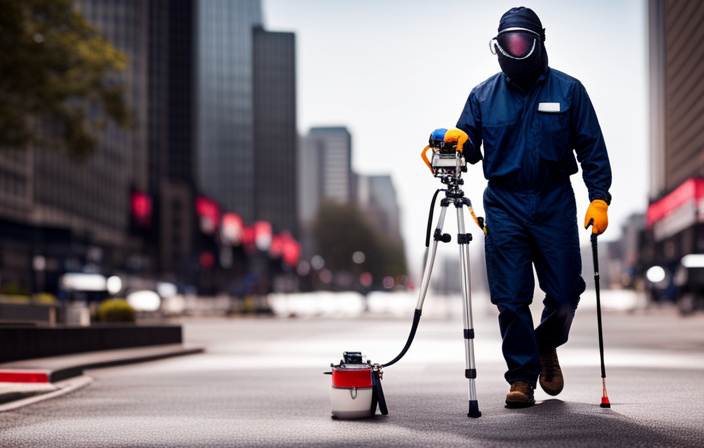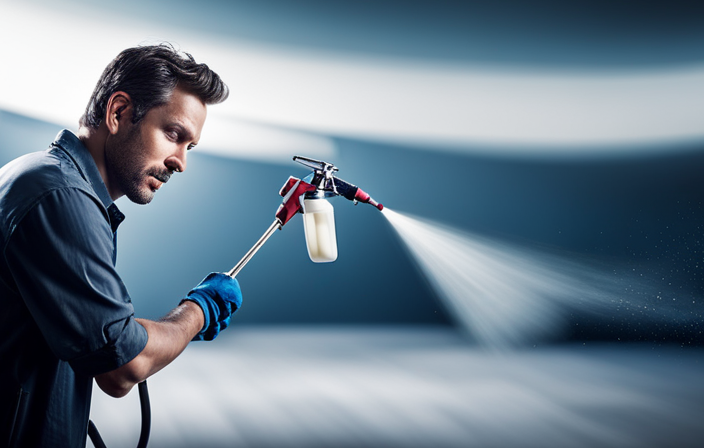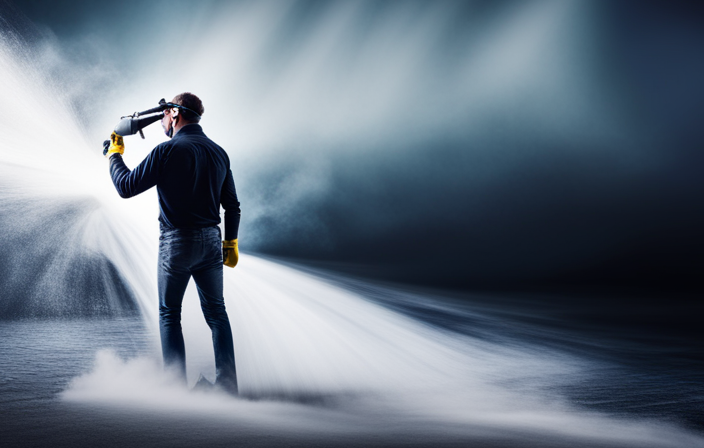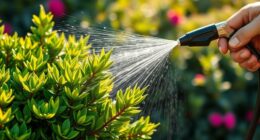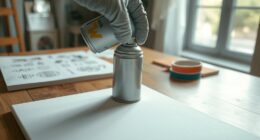Do you want to enhance your painting abilities and achieve a high-quality finish on outdoor surfaces? You’re in the right place! This article will provide you with instructions on using an airless paint sprayer, along with tutorial videos.
With my years of experience in the industry, I have learned the ins and outs of using airless paint sprayers effectively and efficiently.
Using an airless paint sprayer offers numerous benefits, such as saving time and achieving a smooth and even finish. However, it is crucial to take safety precautions and have the right equipment before starting your project. I will provide you with a step-by-step guide on setting up and preparing your airless paint sprayer, along with tips to ensure a flawless outcome.
Whether you are a beginner or an experienced user, this article will cater to your needs. I will also cover cleaning and maintaining your airless paint sprayer, troubleshooting common issues, and even share advanced techniques for those seeking to take their painting game to the next level.
So, let’s dive in and master the art of using airless paint sprayers together!
Key Takeaways
- Clogged spray tips can lead to inconsistent spray patterns and spitting paint, so it is important to remove and clean the spray tip thoroughly with warm water or cleaning solution.
- Inconsistent pressure, such as pulsating or losing pressure, can be resolved by checking for air leaks in the hose or connections, tightening loose fittings, and replacing damaged parts if necessary.
- Power source issues, such as the sprayer not starting or unusual noises, can be addressed by checking the power source connection and troubleshooting electrical issues if needed.
- To maintain a consistent spray pattern, it is important to move the sprayer at a steady pace, overlap each pass by 50% for even coverage, and avoid streaks or uneven areas to achieve professional results.
Introduction to Airless Paint Sprayers
Using an airless paint sprayer is like having a magic wand that effortlessly transforms the dull exterior of your home into a vibrant masterpiece. These powerful machines are designed to evenly distribute paint, saving you time and effort compared to traditional painting methods.
One of the key benefits of airless paint sprayers is their ability to cover large areas quickly and efficiently. With their high-pressure system, they can spray paint at a much faster rate than brushing or rolling, ensuring a smooth and even finish.
When using an airless paint sprayer, it is important to choose the right paint for your project. Look for paints that are specifically formulated for use with airless sprayers to ensure optimal performance. These paints are typically thicker in consistency and have a higher solids content, which allows them to be atomized and applied effectively with the sprayer.
Understanding the benefits of airless paint sprayers and selecting the appropriate paint will ensure a flawless finish. In the next section, we will delve deeper into the advantages of using an airless paint sprayer.
Understanding the Benefits of Airless Paint Sprayers
Understanding the benefits of airless paint sprayers allows you to achieve a professional-looking paint job in less time and with less effort. Here are three key benefits of using an airless paint sprayer:
-
Efficiency: Airless paint sprayers can cover large areas quickly and evenly, saving you time and effort compared to using traditional paint sprayers. The high-pressure system allows for a smooth and consistent application, resulting in a flawless finish.
-
Versatility: Airless paint sprayers are suitable for both interior and exterior projects. When using them outdoors, you can easily adjust the spray pattern and pressure to accommodate different surfaces, such as siding, fences, and decks.
-
Cost-effectiveness: Airless paint sprayers minimize wastage by delivering paint directly to the surface without overspray. This not only saves you money on paint but also reduces cleanup time.
To ensure the best results when using an airless paint sprayer outdoors, it is important to follow these best practices: prepare the surface properly, use the appropriate tip size and pressure settings, and maintain a consistent spraying distance.
When it comes to safety precautions and equipment needed, it is essential to wear protective gear and ensure proper ventilation during the painting process.
Safety Precautions and Equipment Needed
To ensure a safe and successful painting experience, it’s important for you to take proper safety precautions and have the necessary equipment on hand.
When using an airless paint sprayer for exterior projects, it’s crucial to wear the appropriate safety gear. This includes goggles to protect your eyes from paint particles, a respirator mask to prevent inhaling harmful fumes, and gloves to shield your hands from chemicals and potential injuries.
Additionally, proper ventilation is essential when using an airless paint sprayer. Make sure to work in a well-ventilated area or use fans to circulate fresh air. This will help minimize the risk of inhaling toxic fumes and ensure a healthier working environment.
With the necessary safety gear and proper ventilation in place, you can now move on to the next section and learn how to set up and prepare your airless paint sprayer effectively.
Step-by-Step Guide on Setting up and Preparing Your Airless Paint Sprayer
Here is a step-by-step guide on setting up and preparing your airless paint sprayer:
-
First, make sure to read the manufacturer’s instructions thoroughly to familiarize yourself with the specific model you have.
-
Next, assemble the spray gun by attaching it to the hose securely.
-
Then, connect the sprayer to a power source and ensure it is properly grounded.
-
Finally, prime the pump by filling the paint container with the desired paint and flushing the system until a steady flow is achieved.
By following these steps, you will be ready to move on to the next section about tips for achieving a smooth and even finish.
Tips for Achieving a Smooth and Even Finish
Want your paint job to look professional? Here are some tips to help you achieve a smooth and even finish with your airless paint sprayer.
- Select the right paint sprayer designed for exterior use with a high-quality nozzle for a fine mist of paint.
- Prepare the surface by cleaning and sanding it to ensure a smooth base.
- Hold the sprayer at a consistent distance from the surface and move it in a steady, overlapping motion.
- Start with lighter coats and gradually build up the coverage to avoid drips or runs.
- Always follow the manufacturer’s instructions for the best results.
Transitioning into the next section, let’s explore techniques for painting different exterior surfaces.
Techniques for Painting Different Exterior Surfaces
To achieve a professional-looking paint job, it is important to master different techniques for painting various exterior surfaces. This will ensure a smooth and even finish that enhances the overall appearance of your home. Here are four techniques to consider when painting brick and stucco:
-
Preparing the surface: Before painting, thoroughly clean the brick or stucco surface to remove any dirt, dust, or loose paint. Use a pressure washer or a wire brush for stubborn stains. Repair any cracks or damaged areas with the appropriate filler.
-
Priming: Apply a high-quality primer specifically designed for brick or stucco surfaces. This will promote better adhesion and ensure a long-lasting finish.
-
Paint application: Use a thick-nap roller or a paint sprayer to apply the paint evenly. Start from the top and work your way down, making sure to cover all areas.
-
Multiple coats: Depending on the desired color and coverage, apply multiple coats of paint. Allow each coat to dry completely before applying the next.
By following these techniques, you can achieve a flawless paint job on your brick and stucco surfaces.
Now, let’s move on to the next section about cleaning and maintaining your airless paint sprayer.
Cleaning and Maintaining Your Airless Paint Sprayer
Now that we’ve discussed techniques for painting different exterior surfaces, let’s move on to an important aspect of using an airless paint sprayer: cleaning and maintaining it.
Proper cleaning techniques are crucial to ensure the longevity and optimal performance of your sprayer. After each use, I recommend thoroughly cleaning the sprayer by flushing it with water or a cleaning solution. Pay special attention to the nozzle, filters, and hoses to remove any paint residue.
Regular maintenance, such as lubricating moving parts and checking for any leaks or damage, is also essential.
Troubleshooting tips can come in handy if you encounter any issues, such as clogging or uneven spray patterns. In the next section, we will delve into troubleshooting common issues with airless paint sprayers, so you can overcome any challenges that may arise.
Troubleshooting Common Issues with Airless Paint Sprayers
Experiencing issues with your airless paint sprayer? Let’s troubleshoot common problems together!
One of the most common problems is clogged spray tips. If your sprayer isn’t producing a consistent spray pattern or is spitting paint, it’s likely that the spray tip is clogged. To fix this, simply remove the tip and clean it thoroughly with warm water or a cleaning solution.
Another common issue is an inconsistent pressure. If your sprayer is pulsating or losing pressure, check for any air leaks in the hose or connections. Tighten any loose fittings and replace any damaged parts if necessary.
Finally, if your sprayer won’t start or is making unusual noises, check the power source and make sure it’s properly connected.
If these troubleshooting techniques don’t solve your problem, stay tuned for advanced techniques and tricks for experienced users.
Advanced Techniques and Tricks for Experienced Users
If you’ve mastered the basics and are ready to take your skills to the next level, it’s time to explore some advanced spraying techniques and tricks that will help you achieve professional results with your airless paint sprayer.
One important technique is to maintain a consistent spray pattern by moving the sprayer at a steady pace and overlapping each pass by about 50%. This ensures even coverage and avoids streaks or uneven areas.
Another trick is to adjust the pressure and fan width settings on your sprayer to match the specific surface and paint being used. This allows for better control and precision.
Additionally, practicing the ‘feathering’ technique can help blend overlapping spray areas smoothly. By gradually releasing the trigger at the end of each pass, you can create a seamless finish.
These techniques, along with proper preparation and paint mixing, will help you achieve professional-quality results with your airless paint sprayer.
For more tips and information, check out the recommended resources and additional information for airless paint sprayer users.
Recommended Resources and Additional Information for Airless Paint Sprayer Users
Here are some recommended resources and additional information for airless paint sprayer users:
-
Manufacturer’s Website: Visit the official website of the airless paint sprayer manufacturer for user manuals, troubleshooting guides, and product updates.
-
Online Forums and Communities: Join online forums and communities dedicated to airless paint sprayer users. These platforms allow you to connect with experienced users, ask questions, and learn from their expertise.
-
YouTube Tutorials: YouTube offers a vast array of tutorials specifically focused on airless paint sprayers. Watch videos from reputable channels to gain insights into advanced techniques and troubleshooting tips.
-
Books and eBooks: Look for books and eBooks that cover advanced techniques, maintenance, and troubleshooting for airless paint sprayers. These resources can provide valuable in-depth information.
-
Professional Training Courses: Consider enrolling in professional training courses tailored for experienced airless paint sprayer users. These courses often provide hands-on training and expert guidance.
By utilizing these recommended resources and seeking additional information, you can expand your knowledge and expertise in using airless paint sprayers.
Frequently Asked Questions
How long does it take for the paint to dry when using an airless paint sprayer?
When using an airless paint sprayer, the paint typically dries faster compared to traditional methods. To speed up drying time, ensure proper ventilation, use thinner coats, and consider adding a drying accelerator to the paint.
Can I use an airless paint sprayer to paint textured surfaces?
Yes, you can use an airless paint sprayer to paint textured surfaces. However, it requires some painting techniques, tips, and tricks. The key is to adjust the pressure, use a thicker paint, and maintain a consistent distance and speed while spraying.
What type of paint is best to use with an airless paint sprayer?
The best paint types to use with an airless paint sprayer are latex and acrylic paints. They work well with the high pressure and provide a smooth, even finish. Some tips and techniques include thinning the paint and using the correct nozzle size for optimal results.
How often should I clean my airless paint sprayer?
I clean my airless paint sprayer after every use to ensure optimal performance. Cleaning frequency is crucial to prevent clogs and maintain the sprayer’s efficiency. Here are some maintenance tips to keep your sprayer in top shape.
Can I use an airless paint sprayer to paint indoors?
Yes, you can use an airless paint sprayer to paint indoors. However, it’s crucial to prioritize indoor airless paint sprayer safety. Here are some tips for painting indoors with an airless sprayer: proper ventilation, covering surfaces, wearing protective gear, and using low-pressure settings.
Conclusion
Well, there you have it, folks! Congratulations on making it through this extensive guide on how to use airless paint sprayers for exterior projects.
I hope you’ve learned a thing or two about this amazing tool and its benefits.
Remember, safety should always be your top priority when using any equipment, so make sure to follow the precautions mentioned.
With the right setup and preparation, you’ll be able to achieve a smooth and even finish that will make your neighbors green with envy.
And don’t forget to clean and maintain your sprayer for long-lasting performance.
If you encounter any issues, our troubleshooting section should come in handy.
For those experienced users out there, we’ve even included some advanced techniques and tricks to take your painting skills to the next level.
And finally, don’t forget to check out our recommended resources and additional information for further guidance.
So go forth, my friends, and paint the town (or your house) with confidence! Happy painting!
